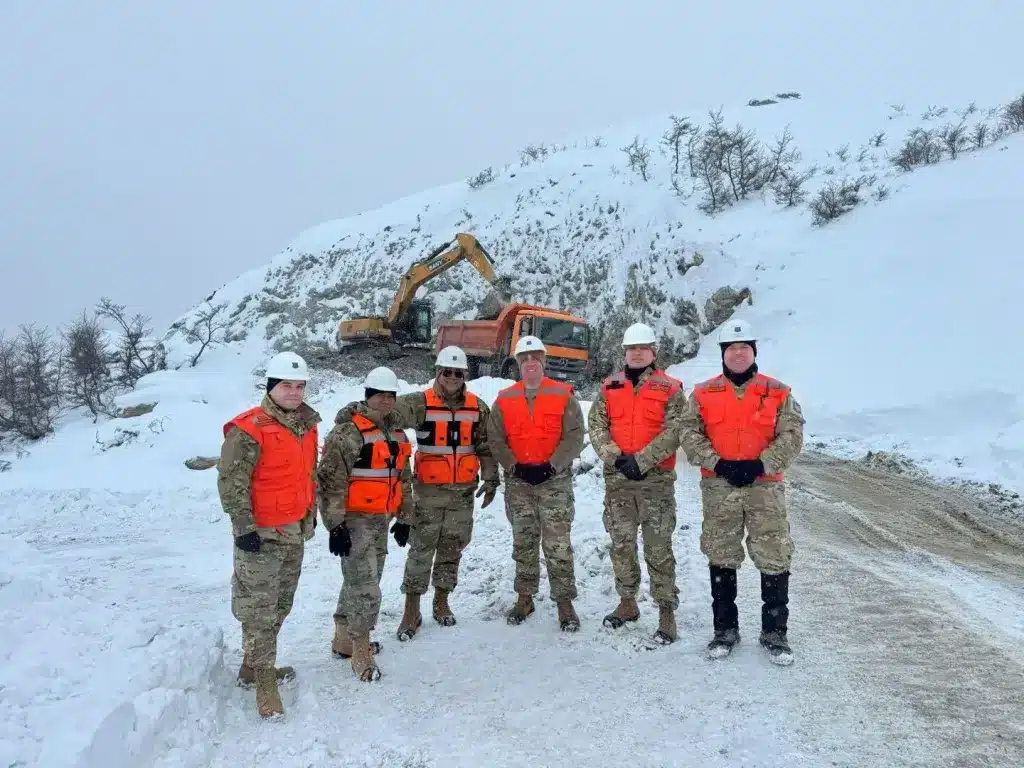
US military engineers at an infrastructure project of the Chilean Military Labor Corps in the Darwin Range, Patagonia, southern Chile. Photo: Chilean Army.

Orinoco Tribune – News and opinion pieces about Venezuela and beyond
From Venezuela and made by Venezuelan Chavistas

US military engineers at an infrastructure project of the Chilean Military Labor Corps in the Darwin Range, Patagonia, southern Chile. Photo: Chilean Army.
The recent presence of a US Army force at the Military Labor Corps’ (CMT) Vicuña-Yendegaia project in the Magallanes Region of Chile, has raised alarms about national sovereignty in Patagonia. The aim of the project is to connect Puerto Williams to the mainland via a bimodal land-sea route, with alleged support from military engineers of the Texas Army National Guard.
While the US military presence is not officially intended for establishing a military base or conducting joint exercises, the question that arises is whether Chilean engineering teams lack sufficient expertise, and why there is a need to rely on US forces at all. Officially, this is described as a technical and professional exchange. However, in a territory as strategically important as Chile’s southernmost region, the presence of foreign military contingents cannot be viewed without scrutiny.
Patagonia: a geostrategic region
Patagonia is not just a postcard of glaciers and mountains. It is a natural border that projects Chile toward Antarctica and a reserve of strategic resources: fresh water, hydrocarbons, biodiversity, and maritime corridors. Its geopolitical value has historically been recognized by foreign powers that have attempted, directly or indirectly, to control it.
From the 19th century, when British explorers sought to secure routes through the Strait of Magallanes, to the 20th-century tensions with Argentina over the southern channels, Patagonia has been the scene of diplomatic and military disputes. Today, under the guise of “international cooperation,” old tensions are resurfacing as technical alliances.
Testimonies from the south
Lieutenant Colonel Rodrigo Vergara Q., head of the CMT in Punta Arenas, praised the US military engineers’ visit as an opportunity to “exchange knowledge and strengthen professional ties of friendship.” Similarly, Captain Patrick Hussey of the US Army called the cooperation mechanism “very successful” in understanding the CMT’s mission and planning joint training exercises.
However, critical voices from social organizations in the region, who prefer to remain anonymous, warn that such agreements open the door to foreign interference in strategic areas. They emphasize that infrastructure development in Magallanes should be a national project, funded and carried out by Chile, and not an arena where foreign forces gain a presence and knowledge of the territory.
Connectivity projects in remote areas serve a dual role: they improve the quality of life for residents and reaffirm national sovereignty.
But the fact that some of these works may involve US forces raises key questions:
Historical tensions in the region
The dilemma: cooperation or autonomy
The criticisms are not about rejecting all technical exchanges, but rather about questioning whether Chile should depend on foreign military assistance for strategic projects in Patagonia. For many, the answer is obvious. Sovereignty cannot be shared: it is either exercised or lost.
Patagonia serves as both a natural laboratory for scientific development and a field of global competition. For Chileans, it represents a historic challenge: to consolidate territorial integration through their own national capabilities, or to create an opening that, under the guise of cooperation, undermines the independence achieved through historical struggles.
(Diario Red)
Translation: Orinoco Tribune
OT/SC/DZ
Support Groundbreaking Anti-Imperialist Journalism: Stand with Orinoco Tribune!
For 7 years, we’ve delivered unwavering truth from the Global South frontline – no corporate filters, no hidden agenda.
Last year’s impact:
• More than 200K active users demanding bold perspectives
• 216 original pieces published in 2025 alone
Fuel our truth-telling: Every contribution strengthens independent media that actually challenges imperialism.
Be the difference: DONATE now to keep radical journalism alive!